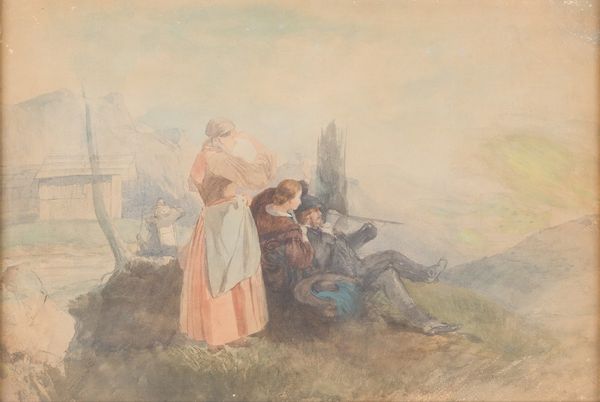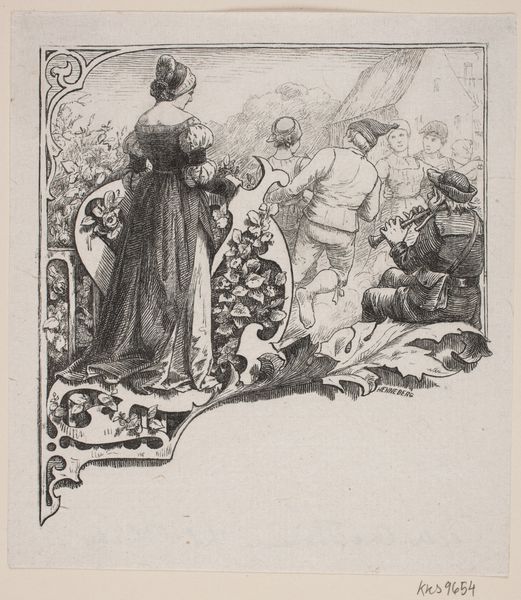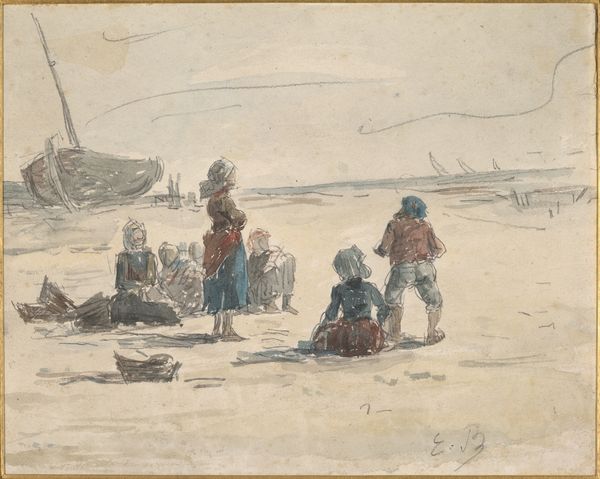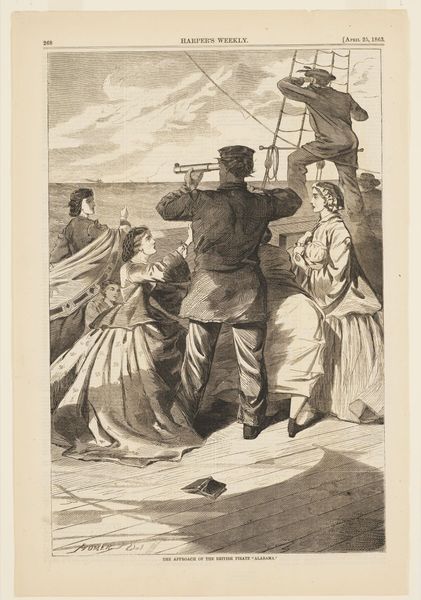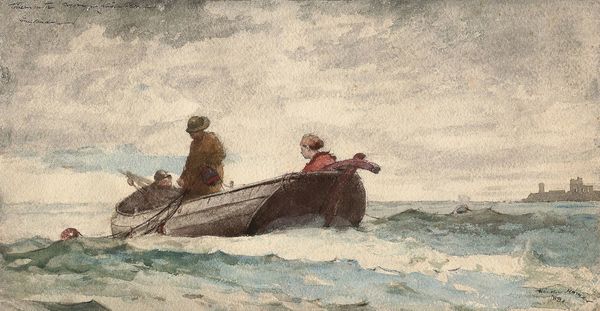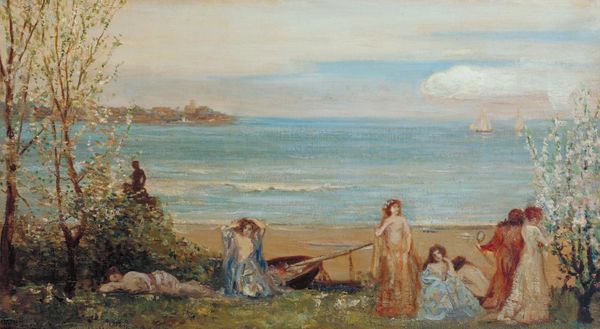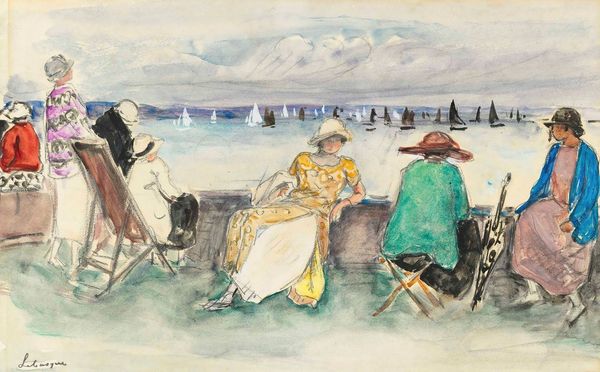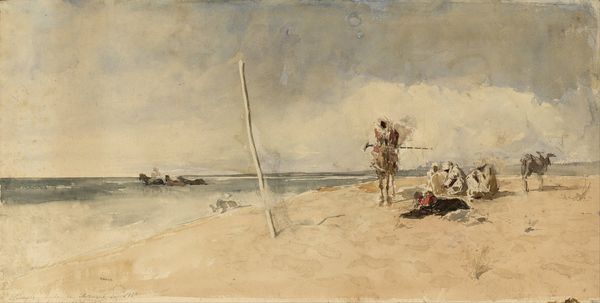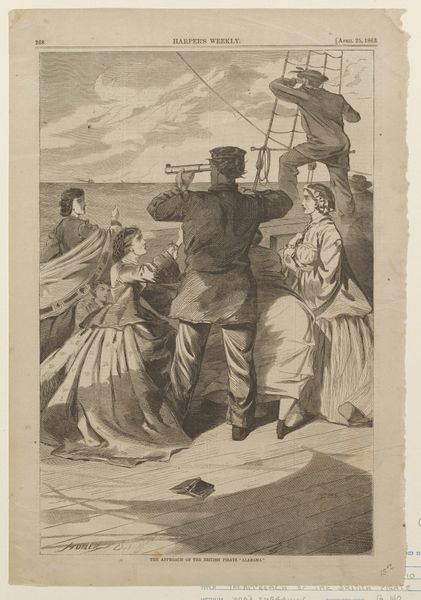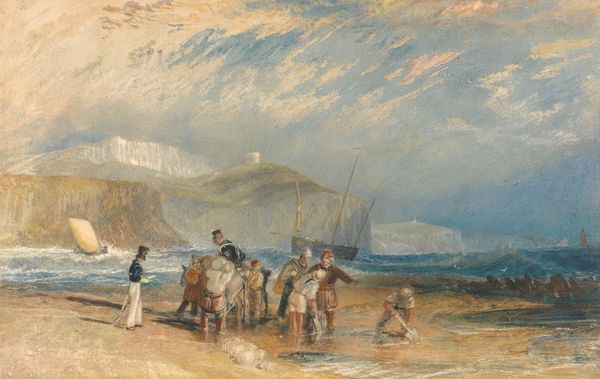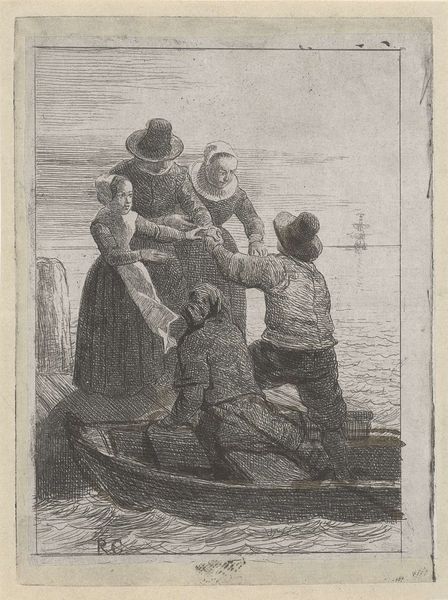
painting, watercolor
#
venetian-painting
#
painting
#
landscape
#
oil painting
#
watercolor
#
romanticism
#
genre-painting
Copyright: Public Domain: Artvee
Editor: This watercolor, "Jeunes femmes sur le pont de la Paille à Venise" by Félix Ziem, is absolutely captivating. I am immediately struck by its ethereal quality and the softness of the figures against the Venetian backdrop. How do you interpret this work, focusing on its materials and what they tell us? Curator: Looking through a materialist lens, the use of watercolor is fascinating here. Watercolor, often seen as a 'lesser' medium than oil, was increasingly embraced in the 19th century, precisely because of its portability and speed, allowing artists to capture fleeting moments. Consider how Ziem exploits watercolor’s transparency and fluidity; notice how it contrasts with, say, the heavy materiality of oil paints in academic painting. Editor: That’s interesting. It does feel very immediate and of the moment, less staged than something done in oil. The subject matter too—women on a bridge—feels like a scene of everyday life, not some grand historical narrative. Curator: Exactly! Ziem’s focus shifts from the monumental to the everyday lives of these women. Can you think about how the materiality—the cheapness and easy availability of paper and watercolor—democratized artmaking, broadening representation? Whose lives were traditionally deemed worthy of artistic representation? Editor: That’s a good point. It definitely allows for more intimate glimpses into ordinary lives, not just portraits of the wealthy or depictions of historical events. The watercolor's wash makes the buildings in the background appear almost weightless. Curator: Consider Venice itself. Its decline as a major power led to its romanticization, consumed and represented through the very stuff of art itself. This watercolor is not just pigment and paper; it’s bound up with changing social and economic structures. Are we perhaps also viewing the birth of the tourism industry? Editor: I never considered it from that perspective. Now, looking at it again, I’m more aware of the way Ziem’s artistic choices reflect both his engagement with, and detachment from, his subject matter. Thank you for pointing that out. Curator: And I find myself reconsidering the bridge—the paille (straw)—what materials are they built from, and how the artist chose to portray its laborers rather than its elites. Food for thought!
Comments
No comments
Be the first to comment and join the conversation on the ultimate creative platform.

